
I like personality development, change, & prediction. Depending on the day (or hour), I also like R & Bayesian stats
https://www.amanda-j-wright.com
2) Life events were related to personality development, but almost exclusively for personality functioning
We believe this suggests that personality functioning is more susceptible to external influences than most Big Five traits

2) Life events were related to personality development, but almost exclusively for personality functioning
We believe this suggests that personality functioning is more susceptible to external influences than most Big Five traits
1) Unconditional development of all constructs was generally very similar, but there were some interesting trait- & metric-specific differences

1) Unconditional development of all constructs was generally very similar, but there were some interesting trait- & metric-specific differences
We examined unconditional & event-related changes in pathological vs normal-range personality using 4 metrics to compare their developmental links, how these vary with life events, and whether unique effects emerge across metrics

We examined unconditional & event-related changes in pathological vs normal-range personality using 4 metrics to compare their developmental links, how these vary with life events, and whether unique effects emerge across metrics
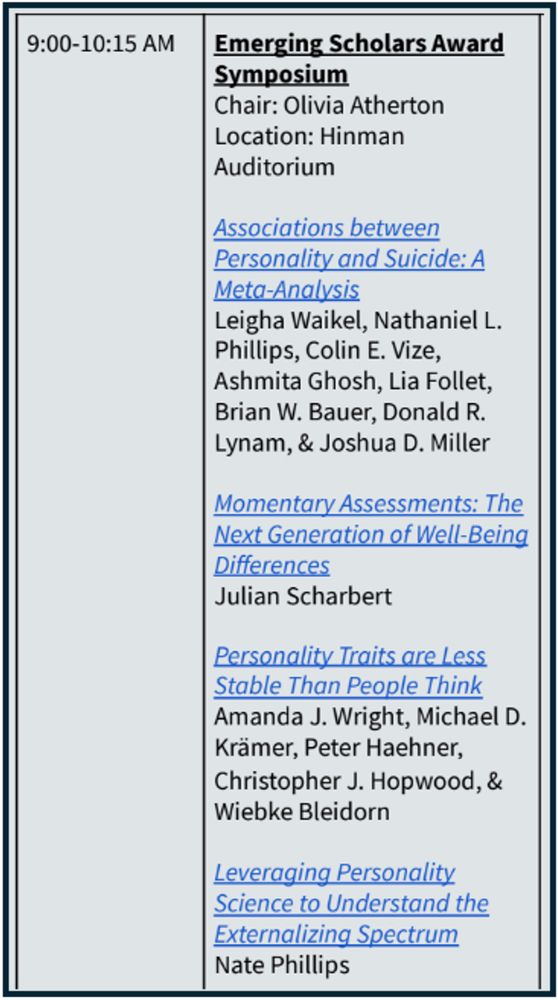
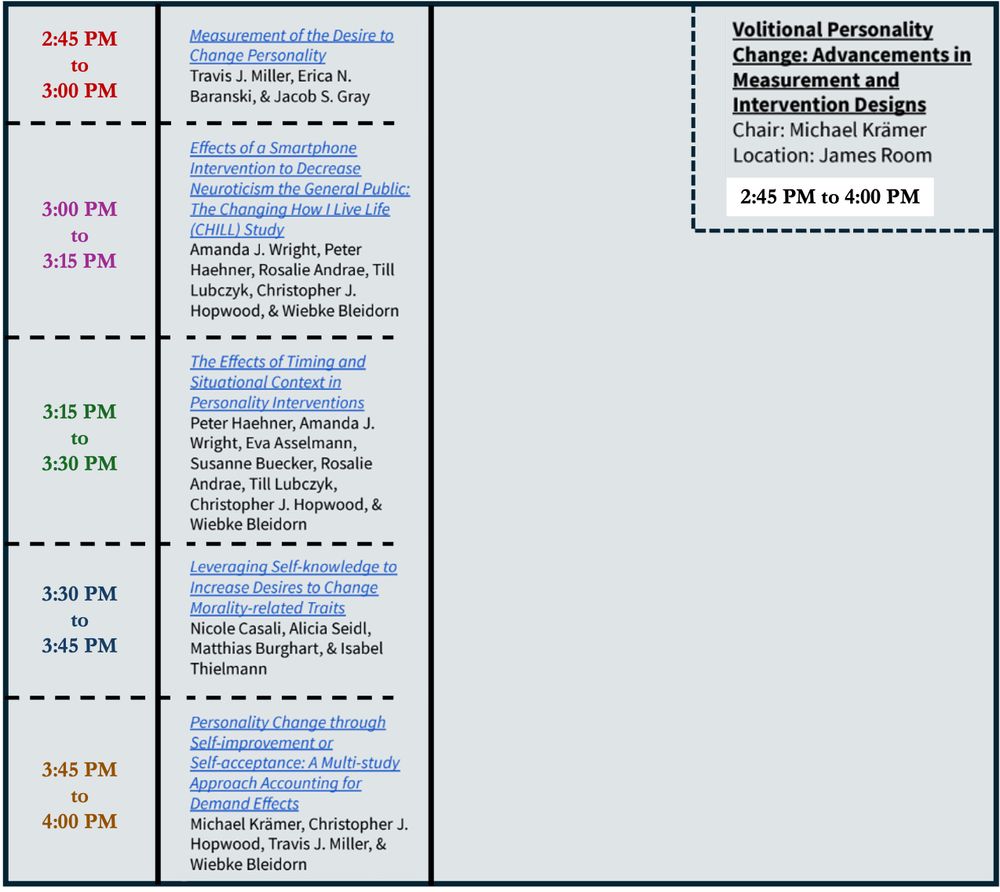


Two traits had top 6 largest net decreases (E/N)
One trait (C) had top 5 largest net increases & cumulative changes. Its changes were similar to health & larger than any psych variable (5/8)
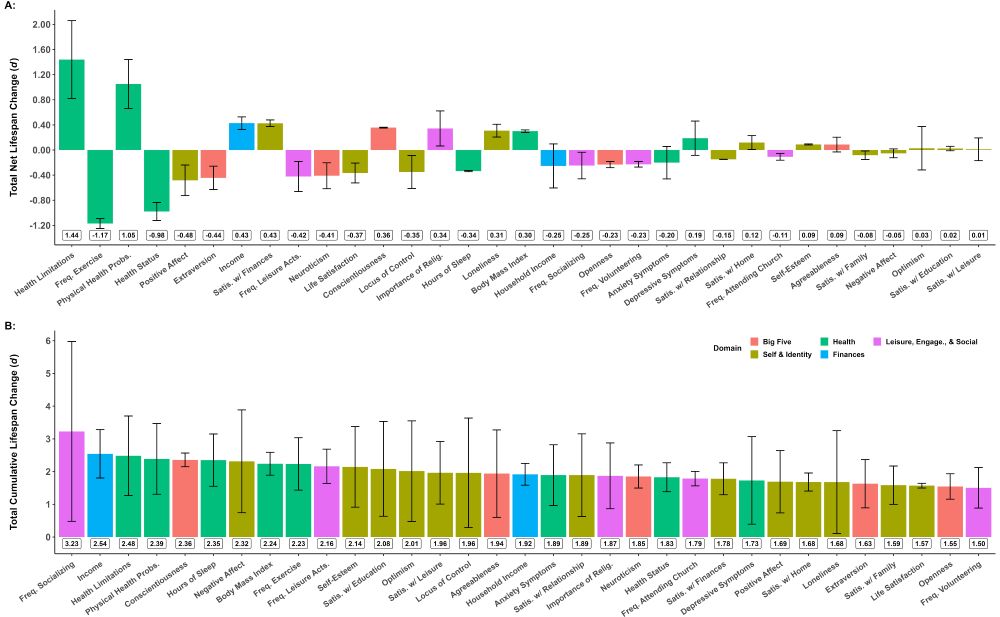
Two traits had top 6 largest net decreases (E/N)
One trait (C) had top 5 largest net increases & cumulative changes. Its changes were similar to health & larger than any psych variable (5/8)
Domain-level ratings also showed people believe personality changes less than domains like health, finances, & other psych variables (4/8)
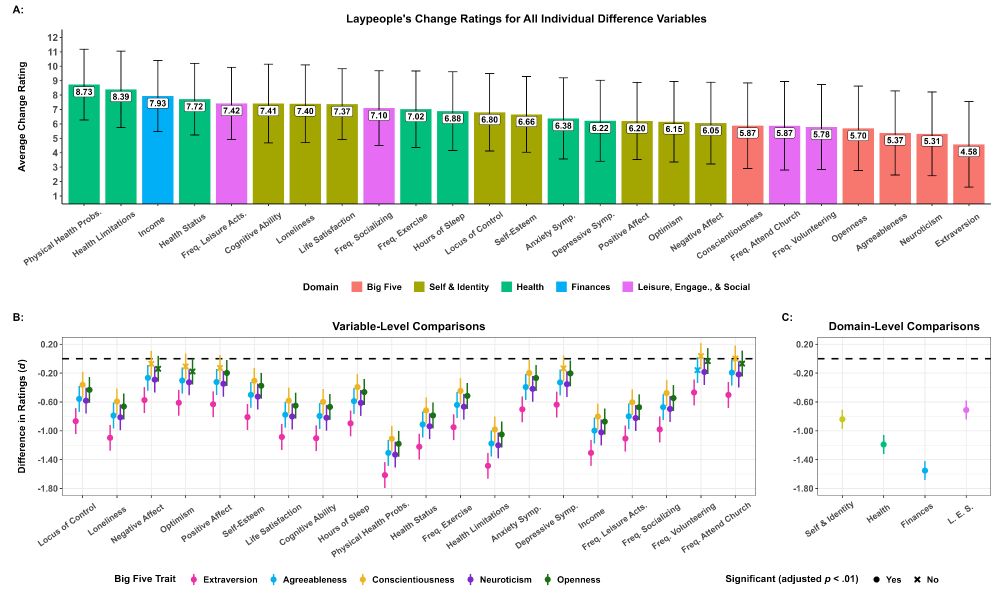
Domain-level ratings also showed people believe personality changes less than domains like health, finances, & other psych variables (4/8)
- Decreased rank-order stability
- Anticipatory group differences in slopes + within-person mean-level decreases from pre- to post-event
- Less initial within-person variability for event group + increases in this metric from pre- to post-event (4/7)

- Decreased rank-order stability
- Anticipatory group differences in slopes + within-person mean-level decreases from pre- to post-event
- Less initial within-person variability for event group + increases in this metric from pre- to post-event (4/7)
However, these rather bland sample effects masked considerable heterogeneity - which was related to life events! (3/7)

However, these rather bland sample effects masked considerable heterogeneity - which was related to life events! (3/7)
Why four metrics? Because rank-order stability & mean-level changes cannot and do not tell you everything about a construct's development 🤌🏼 (2/7)

Why four metrics? Because rank-order stability & mean-level changes cannot and do not tell you everything about a construct's development 🤌🏼 (2/7)
If you’re at #DGPs2024 and want to hear 5 great talks about integrating idiographics & nomothetics in psychology, please come check out our symposium led by @niclaskuper.bsky.social on Wednesday at 11:30!


If you’re at #DGPs2024 and want to hear 5 great talks about integrating idiographics & nomothetics in psychology, please come check out our symposium led by @niclaskuper.bsky.social on Wednesday at 11:30!
- There is a lot of heterogeneity in best-fitting forms for the Big Five
- People’s forms are directly associated with their net & total amount of change across time
- These changes are very misquantified when a worse-fitting form is used

- There is a lot of heterogeneity in best-fitting forms for the Big Five
- People’s forms are directly associated with their net & total amount of change across time
- These changes are very misquantified when a worse-fitting form is used
It’s pretty standard to acknowledge individual differences in mean levels of traits (via intercepts) and changes in traits (often via linear slopes), but what about model forms of personality trajectories?
doi.org/10.1037/pspp...

It’s pretty standard to acknowledge individual differences in mean levels of traits (via intercepts) and changes in traits (often via linear slopes), but what about model forms of personality trajectories?
doi.org/10.1037/pspp...


This individual difference predicted health status by itself, over & above people’s trait levels and changes, and had some notable interactions as well (5/8)

This individual difference predicted health status by itself, over & above people’s trait levels and changes, and had some notable interactions as well (5/8)
Individual differences in within-person variability were related to variables like age, gender, cognitive ability, & other trait levels
All effects emerged independent of effects rather due to trait levels or changes (4/8)

Individual differences in within-person variability were related to variables like age, gender, cognitive ability, & other trait levels
All effects emerged independent of effects rather due to trait levels or changes (4/8)
Substantial heterogeneity in within-person variability around Big Five trajectories emerged across all datasets & traits
Variability in sigma was comparable to - & sometimes even surpassed - variability in intercepts & slopes (3/8)


Substantial heterogeneity in within-person variability around Big Five trajectories emerged across all datasets & traits
Variability in sigma was comparable to - & sometimes even surpassed - variability in intercepts & slopes (3/8)
We used 5 datasets (N = 128K) to do a deep dive into within-person variability for long-term personality development, a metric common in short-term dynamics work but (sadly!) pretty disregarded longitudinally (1/8)
psycnet.apa.org/record/2024-...
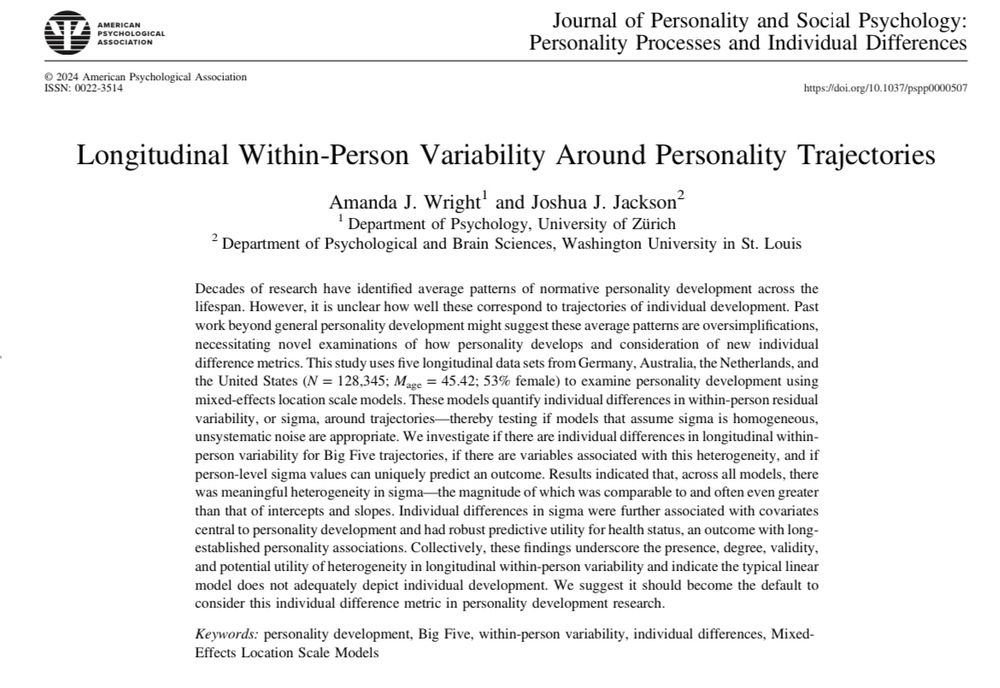
We used 5 datasets (N = 128K) to do a deep dive into within-person variability for long-term personality development, a metric common in short-term dynamics work but (sadly!) pretty disregarded longitudinally (1/8)
psycnet.apa.org/record/2024-...



Indeed, across all Big Five traits in each dataset, there was meaningful heterogeneity in sigma. When compared to the single sigma from a MLM, person-level sigmas varied a lot (6/11)

Indeed, across all Big Five traits in each dataset, there was meaningful heterogeneity in sigma. When compared to the single sigma from a MLM, person-level sigmas varied a lot (6/11)

We found that there was substantial heterogeneity in best-fitting model forms - with most people actually adhering to a cubic form, on average. This figure depicts the distribution of best-fitting model forms for one dataset

We found that there was substantial heterogeneity in best-fitting model forms - with most people actually adhering to a cubic form, on average. This figure depicts the distribution of best-fitting model forms for one dataset

